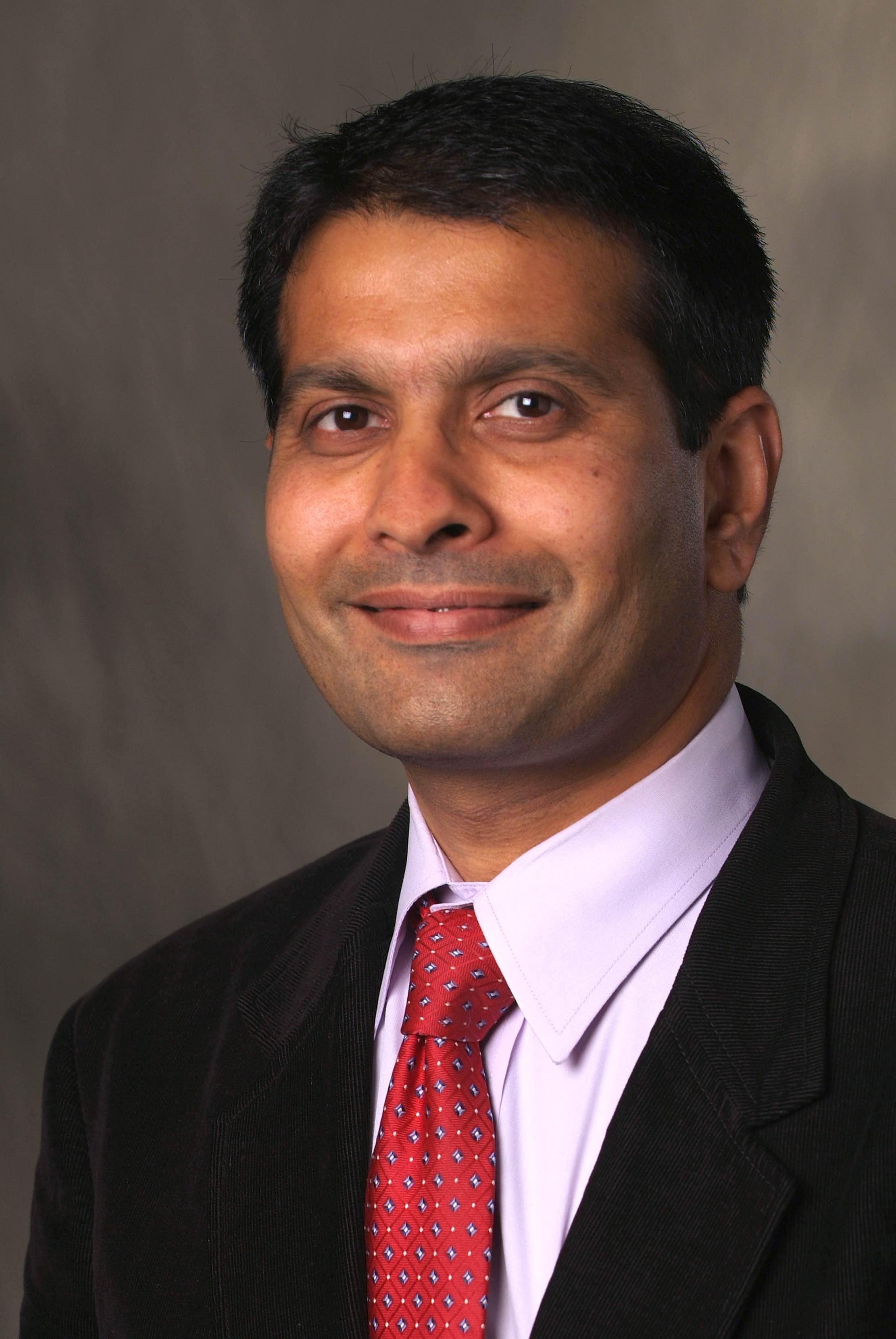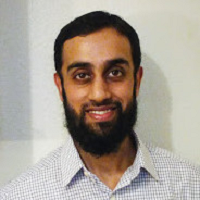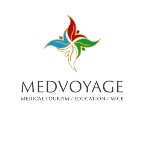Sessions and Tracks
1.Addiction Psychiatry
Addiction psychiatry is a medical specialisation of psychiatry that focuses on evaluating, diagnosing, and treating persons who have one or more addiction-related illnesses. Disorders involving legal and illegal drugs, gambling, sex, food, and other impulse control disorders are examples of this. Addiction psychiatrists are experts in substance abuse disorders. Many patients with psychiatric illnesses simultaneously struggle with drug or alcohol addiction. For people with chronic depression, bipolar illness, anxiety, and attention deficit disorder, drugs activate hidden psychiatric vulnerabilities, generate lifelong mental disease, and serve as self-medication.
Information about the neurochemical, physiological, psychological, and anatomical implications of numerous substance-related illnesses has exploded in the field of addiction psychiatry. This has been accompanied with a more thorough approach to determining which therapy modalities are helpful in combating these problems than was used even a decade ago. New neurochemical, physiological, and anatomical discoveries have aided in the development of new pharmacological approaches to substance-related diseases, as well as the rationalisation of previous pharmacological treatments. Addiction psychiatrists are uniquely qualified to treat co-occurring mental health diseases and substance use disorders (whether active use, withdrawal, or early/late recovery).
2. Adult and Geriatric Psychiatry
Geriatric psychiatry is a branch of medicine that focuses on the diagnosis and treatment of mental illnesses in elderly people. It is not shameful to seek help from a specialist skilled in the mental health treatment of older individuals. Psychiatric illnesses in older persons can be chronic and develop earlier in life, or they might develop for the first time after the age of 50. Substance misuse is widespread among the elderly, in addition to depression and anxiety. Neurological illnesses like stroke, Alzheimer's, and other neurocognitive disorders can cause delusions, agitation, and violence. Circadian rhythm abnormalities, as well as the misuse of drugs, might aggravate these symptoms.
Geriatric psychiatry focuses on the biological and psychological elements of normal ageing, the mental impact of severe and chronic corporeal illness, and the biological and psychosocial characteristics of the pathology of main psychiatric syndromes in older people. Geriatric psychiatrists focus on the prevention, assessment, treatment, and resolution of mental and emotional disorders in the aged, as well as the expansion of psychiatric care for both healthy and sick mature patients.
Anxiety
Attention deficit hyperactivity disorder (ADHD) , Bipolar disorder is a mental illness that affects people in Depression, Anorexia nervosa, Mood disturbances.
3. Alzheimer’s and Dementia
Alzheimer's disease is the most common form of dementia and a degenerative brain illness. Dementia is an umbrella word that defines a set of symptoms rather than a specific disease. Alzheimer's disease is a progressive neurologic disorder in which the brain shrinks (atrophy) and brain cells die. Alzheimer's disease is the most common form of dementia, which is defined as a progressive loss of cognitive, behavioural, and social skills that impairs a person's capacity to operate independently.
Forgetting recent events or discussions is one of the first indicators of Alzheimer's disease. A person with Alzheimer's disease will develop significant memory loss and lose the capacity to transfer out daily chores as the condition progresses. Medications can temporarily increase or delay the progression of symptoms. These medicines can occasionally assist persons with Alzheimer's disease preserve their independence and maximise their function. People with Alzheimer's disease and their carers can benefit from a variety of programmes and services. Alzheimer's disease has no cure or treatment that affects the disease process in the brain. Complications from significant loss of brain function, such as dehydration, starvation, or infection, can lead to mortality in advanced stages of the condition.
4. Anxiety Disorders
Anxiety disorders are a category of mental illness. It's difficult to get through the day when you're anxious. Nervousness, panic, and terror are common symptoms, as are sweating and a racing heart. Medication and cognitive behavioural therapy are among the options for treatment.
Anxiety is a normal human reaction that affects both the mind and the body. It performs an essential survival function: Anxiety is a warning mechanism that goes off whenever a person perceives a threat or danger. Physical symptoms of anxiety include a rapid heartbeat and respiration, tense muscles, sweaty palms, a queasy stomach, and trembling hands or legs when the body and mind react to danger or threat. These feelings are a result of the body's fight-or-flight reaction.
They are brought on by a surge of adrenaline and other substances that prepare the body to flee from danger quickly. When a person detects a threat, the fight-or-flight reaction is triggered immediately. The thinking section of the brain (the cortex) takes a few seconds longer to absorb the situation and determine whether the threat is real and, if so, how to tackle it. The fight-or-flight response is deactivated and the nervous system can relax when the cortex gives the all-clear signal.
Anxiety may persist if the mind believes that a threat will persist, keeping the person alert. Physical sensations such as rapid, shallow breathing, a racing pulse, tense muscles, and sweaty palms may linger.
Anxiety disorders are mental illnesses characterised by high levels of anxiety, fear, uneasiness, worry, or dread. Anxiety that is too constant or too intense can make a person feel worried, distracted, tense, and constantly on the lookout. Anxiety disorders are among the most prevalent mental illnesses. They have an impact on people of all ages, including adults, children, and teenagers. Anxiety disorders come in a variety of forms, each with its own set of symptoms. However, they all have one thing in common: Anxiety is too common, excessively severe, out of proportion to the current situation, and affects a person's daily life and happiness.
5. Bipolar Disorder and Schizophrenia
Bipolar disorder is a mental condition characterised by extreme mood fluctuations, at least one episode of mania (an elevated or heightened state of mind), and maybe multiple episodes of sadness. It is a mood condition that affects up to 4 million people in the United States. Schizophrenia is a persistent, severe, and debilitating mental condition characterised by psychotic symptoms, which indicate a loss of awareness of reality. Suicide, substance misuse, and other mental health issues are more common in people with either condition. Bipolar disorder is characterised by dramatic changes in energy, mood, and activity levels. Bipolar disorder causes a person to alternate between intense excitation, or mania, and depression.
Schizophrenia is most commonly diagnosed in late adolescence or early infancy. The use of medicines and psychosocial assistance in conjunction with behaviour is successful. With the right treatment and social support, even the most vulnerable persons can live a productive life and integrate into society. Facilitation of assisted living, supported housing, and supported employment can serve as a foundation for people with serious mental illnesses, such as schizophrenia, to achieve a variety of rehabilitation goals, as they often struggle to find or keep a place to live and work.
6. Child and Adolescent Psychiatry
The diagnosis, treatment, prevention, and rehabilitation of neuropsychiatric and developmental disorders, as well as behaviour abnormalities in children and adolescents, are all covered by child and adolescent psychiatry and psychotherapy. The need for a separate psychiatric discipline for children and adolescents stems from the age-related characteristics of mental diseases, which are heavily influenced by the rapidly alternating stages of neurobiological and social development throughout this time of life.
The child and adolescent psychiatrist uses a defined set of diagnostic criteria, such as the Diagnostic and Statistical Manual or the International Classification of Diseases, to make a diagnosis based on the pattern of behaviour and emotional symptoms.
While the DSM system is extensively used, it is possible that it does not fully account for social, cultural, and environmental aspects, and that a tailored clinical formulation may be more effective. A case formulation is a process of integrating and summarising all important aspects implicated in the development of the patient's problem, including biological, psychological, social, and cultural perspectives, and is standard practise for child and adolescent psychiatrists. The applicability of DSM diagnoses in the assessment of very young children has also been questioned: it is argued that very young children develop too quickly to be adequately described by a fixed diagnosis, and that a diagnosis also unhelpfully locates the problem within the child when the parent-child relationship is involved.
7. Emotional and Behavioural disorders
Emotional and behavioural disorders (EBD; sometimes known as behavioural and emotional disorders) are a type of impairment that allows educational institutions to provide special education and related services to pupils who have shown inadequate social and/or academic progress.
A person with EBD who engages in "internalising" behaviour may have low self-esteem, be depressed, lose interest in social, academic, and other pursuits, and engage in non-suicidal self-injury or substance misuse. Separation anxiety or another anxiety disorder, post-traumatic stress disorder (PTSD), particular or social phobia, obsessive–compulsive disorder (OCD), panic disorder, and/or an eating disorder are all possible diagnoses for students who engage in internalising behaviour.
For children who are very disruptive, teachers are more inclined to write referrals. Screening measures for detecting pupils that engage in a lot of "internalising" behaviour aren't very sensitive, so they're rarely utilised in practise. Students with EBD who engage in "externalising" conduct are more likely to be aggressive, noncompliant, extroverted, or disruptive.
Students with EBD who exhibit externalising behaviour are frequently diagnosed with ADHD, oppositional defiant disorder (ODD), conduct disorder, and/or bipolar disorder; however, this population can also include typically developing children who have learned to exhibit externalising behaviour for a variety of reasons (e.g., escape from academic demands or access to attention). These kids frequently struggle to control their emotional responses to anger, frustration, and disappointment. Students who "externalise" engage in insulting, provocative, threatening, and bullying activities.
8. Mental Disorders
In all countries of the world, the liability of emotional infections remains to rise, posing serious health risks as well as huge social, human rights, and economic ramifications. There are many several types of mental syndromes, each with its own set of indications. They are considered by a mix of uncharacteristic feelings, sensitivities, sensations, activities, and interactive acquaintances. Depression, bipolar illness, schizophrenia and other psychoses, dementia, and progressive infections such as autism are patterns of mental ailments. Conceptual maladies, such as depression, can be prohibited with the use of capable approaches. Mental complications can be cured effectually, and the depression they cause can be relieved.
People with mental illnesses require social support and care in addition to medical assistance. They frequently require assistance in finding educational programmes that are appropriate for their requirements, as well as in navigating the educational system.
9. Neuro Infectious Diseases
From the brain and spinal cord to muscles and nerves, neuroinfectious disorders affect the nervous system. There are many different types of neuroinfectious illnesses, such as:
Meningitis and encephalitis are bacterial or viral infections that cause inflammation of the membranes covering the brain and spinal cord, which can result in impairment or death. A viral illness that causes loss of coordination, language skills, and memory is known as progressive multifocal eukoencephalopathy.
HIV-associated neurodegeneration is a type of dementia caused by HIV infection that occurs despite the use of effective antiretroviral medication. Neurosarcoidosis is a nervous system inflammatory illness characterised by facial paralysis and headaches that can progress to a chronic condition. HTLV 1 myelopathy causes hereditary spastic paraparesis, a degenerative spinal cord illness that causes extremely stiff and weak legs. Transverse myelitis is a condition that causes pain, weakness, paralysis, sensory issues, and bladder and bowel dysfunction on both sides of the spinal cord. Viruses and bacteria can infiltrate the body, invading numerous organs and generating a variety of symptoms ranging from minor irritation to major illness. Bacterial organisms are the most common source of infection, however animal parasites and fungus can also be involved. These viruses and organisms affect the nerve system, causing neurological illnesses.
10. Neurobiology of Depression
Depression's neurobiology contains dichotomous deviations in corticolimbic brain areas. Neuronal shrinkage and synaptic dysfunction are shown in the prefrontal cortex and hippocampus, but neuronal hypertrophy and enhanced synaptic activity are seen in the nucleus accumbens and amygdala.
Different brain areas exhibit abnormal activity in persons with major depressive disorder (MDD), according to scientific investigations, which has fueled advocates of numerous theories that seek to find a physiological genesis of the disease rather than psychological or social factors. Nutritional deficiencies in magnesium, vitamin D, and tryptophan, which have a situational origin but a biological consequence, are among the factors that span these causal groupings.
Several ideas have been proposed throughout the years regarding the molecular origin of depression, including theories involving monoamine neurotransmitters, neuroplasticity, neurogenesis, inflammation, and the circadian rhythm. Depressive symptoms can also be triggered by physical conditions such as hypothyroidism and mitochondrial disease. Neural pathways involved in the creation and regulation of emotion, as well as reward, have been linked to depression. The lateral prefrontal cortex, whose putative role is usually thought to involve emotion regulation, is prone to abnormalities. The peripheral and central immune systems, which are important in the neurobiology of depression, are dysregulated in subsets of depressed people. Immune impairment in mice subjected to environmental and psychosocial stress is similar to that seen in human populations.
Typical antidepressant agents improve mood by regulating the levels of the monoamines serotonin and noradrenaline, but also partially through attenuation of immune dysregulation. Other antidepressant therapies that limit neuroimmune activation and promote anti-inflammatory pathways may provide alternative treatment options for subsets of depressed individuals.
11. Obsessive-Compulsive Disorder (OCD)
Obsessive-compulsive disorder (OCD) is a mental illness characterised by recurrent unpleasant thoughts or feelings (obsessions) or a strong need to repeat a behaviour (compulsions). Obsessions and compulsions can coexist in some persons. Obsessive-compulsive disorder (OCD) is characterised by a pattern of unwanted thoughts and anxieties (obsessions) that cause you to engage in repetitive actions (compulsions). Obsessions and compulsions create severe distress and interfere with daily tasks. You can try to ignore or stop your obsessions, but this will only make you feel worse. Finally, you feel compelled to engage in obsessive behaviours in order to relieve your tension. Despite attempts to ignore or eliminate troublesome thoughts or urges, they persist. This perpetuates the OCD's vicious circle of ritualistic activity.
OCD frequently revolves around certain topics. An extreme dread of being contaminated by microorganisms, for example. You can wash your hands till they're sore and chapped to alleviate your contamination anxieties. If you have OCD, you may feel ashamed and embarrassed about it, but there is help available.
Have you checked to see if you've secured the door or turned off the stove?
When things aren't in order or facing the right way, it causes a lot of stress.
Temptations to scream obscenities or act badly in public.
Embarrassing sexual photographs.
Avoiding circumstances that may cause obsessions, such as shaking hands.
12. Post-Traumatic Stress Disorder
Post-traumatic stress disorder (PTSD) is a mental health illness brought on by witnessing or experiencing a terrible incident. Flashbacks, nightmares, and intense anxiety, as well as abandoned thoughts near the incident, are all possible indicators.
Most people who have had traumatic situations may struggle with modifying and coping for a while, but with time and adequate self-care, they usually get better. You may have PTSD if your symptoms worsen, linger for months or even years, and interfere with your day-to-day functioning. Accomplishment operative handling following the onset of PTSD symptoms might alleviate acute to moderate symptoms while also increasing purpose.
Post-traumatic stress disorder symptoms may appear within one month of a traumatic event, but on rare occasions, symptoms may not appear for years. These symptoms lead to significant issues in social and work circumstances, as well as in relationships. Intrusive memories, anticipation, harmful modifications in thought and attitude, and changes in bodily and emotional responses are the four forms of PTSD symptoms. Symptoms can change over time or from one person to the next.
13. Psychiatric Rehabilitation
Psychiatric rehabilitation is a type of treatment that focuses on restoring a person's ability to operate at their best and achieving their life goals. This is accomplished through the provision of medical, psychological, and social assistance. Treatment and rehabilitation are not mutually exclusive.
Not everyone with a mental condition needs to be rehabilitated. Medicine, or a combination of medication and therapy, is often enough to help individuals return to a functional life. For others, rehabilitation may be the crucial last step in the therapeutic process.
Treatment for mental illnesses usually consists of two parts: the treatment itself and rehabilitation.
The goal of treatment is to alleviate the patient's symptoms of the condition. The goal of treatment for someone who has a fever is to lower their body temperature. Unlike physical illnesses, where medication or surgery may provide a complete cure, mental illnesses necessitate medication in addition to other forms of treatment. The type of treatment given to the patient is determined by their diagnosis, the severity of their illness, and their physical and emotional condition. Medication, therapy, counselling, institutionalisation, brain stimulation treatments, and psychiatric rehabilitation are some of the treatments that may be required. The distinctions between therapy and rehabilitation are frequently blurred.
14. Psychology & Psychiatry
Psychology is the study of people's thoughts, actions, reactions, and interactions. It is concerned with all elements of behaviour, as well as the thoughts, feelings, and motivation that underpin it. Psychology is a science that studies the normal functioning of the mind and has looked at topics like learning, memory, and children's normal psychological development. It is one of the most popular university disciplines, and it is becoming more widely available in schools and colleges.
Psychologists are not typically medically trained, and only a tiny percentage of psychology graduates go on to work with patients. Psychologists can specialise in a variety of fields, including mental health, educational psychology, and vocational psychology. Clinical psychology is a specialty of psychologists in the healthcare field.
Psychiatry is the science of diagnosing, treating, and preventing mental illnesses. Psychiatrists are medical professionals who have completed training in the field of psychiatry. They frequently handle a wide range of cases while also focusing on a specific area of expertise and research. Depression, schizophrenia, eating disorders, fears, phobias, drug and alcohol misuse, post-traumatic stress disorder, and dementia are all examples of mental health issues. Child and adolescent psychiatry is one of their specialties.
Child and Adolescent Psychiatry
Forensic Psychiatry
General Psychiatry
Medical Psychotherapy
Old age Psychiatry
Psychiatry of Intellectual Disability (PID)
15. Psychosomatic Disorders & Psychosomatic Medicine
Psychosomatic illness is a spiritual ailment characterised by the presence of physical symptoms that are classically undiagnosed. Excessive thoughts, feelings, or concerns about the indications might make it demanding for persons with this infection to implement habitually. Psychosomatic disorder patients rarely express overt signs of psychological suffering. Instead, they assume that medical disorders are to blame for their troubles. They routinely seek healthcare practitioners for tests and treatments, but seldom receive a diagnosis, leading to frustration and distress. Psychosomatic disorder is also known as somatic symptom disorder, somatic symptoms, or somatic pain.
Psychosomatic disorder is a psychiatric illness that causes physical symptoms that are often undiagnosed by doctors. It has the potential to affect practically any part of the body. People with the disease seek medical help frequently, dissatisfied by the lack of a diagnosis. Behavioral therapy and stress reduction techniques may be beneficial.
Cognitive behavioural therapy is one of the treatments that can help patients with somatic pain complaints. Antidepressants and other medications.
Mindfulness-based therapy (MBT) is a type of therapy that focuses on Referral to a mental health expert (for example, a psychiatrist or psychologist). Keep in touch with your primary care physician on a regular basis.
16. Social Anxiety
In some social situations, it's common to feel apprehensive. Going on a date or presenting a presentation, for example, can trigger butterflies in your stomach. However, normal conversations produce substantial worry, self-consciousness, and mortification in people who suffer from social anxiety, also known as social phobia, because they are afraid of being judged or mediated negatively by others.
Fear and anxiety are the primary means of escape in social anxiety syndrome, which can disrupt your life. Stress may wreak havoc on your relationships, everyday routines, work, education, and other accomplishments. The stress of these roles is too much to take if you have social anxiety disorder, commonly known as social phobia.
For example, you might avoid all social engagement because things that other people consider "normal," such as building small chat and eye contact, cause you so much anguish. It's possible that all aspects of your life, not just social ones, will begin to come apart.
Social anxiety disorder is a chronic mental health condition, but with education, counselling, and medication, you can acquire self-confidence and improve your ability to interact with people.
When speaking with strangers, Unrestricted communication Socialising, Establishing eye contact, rooms that are leaving, Taking use of public restrooms Working on occasions, Embarrassing themselves in front of other people, Whether it's for school or job, Discussions are being started.
17. Stress, Anxiety and Depression
Anxiety, despair, and stress are all symptoms of anxiety. At some point in their lives, almost everyone has these feelings. From losing a loved one to going through a divorce, these are all common reactions to life's trials. On the surface, they may appear to be very similar, but there are significant variances.
If you are frequently uneasy or disappointed for no apparent reason, you may require an anxiety disorder, melancholy, or both. It's understandably shocking for someone to be dealing with both issues at the same time. In fact, more than half of those diagnosed with sadness also have an anxiety issue. Anxiety and depression are severe syndromes that can be treated. The same medications may be used to alleviate the symptoms of each condition. Both have similar symptoms, such as anxiety, prickliness, sleeplessness, and problems focused complications, but each has its distinct aetiology.
Although stress and anxiety appear to be comparable, they are not the same. Anxiety is a response to stress, which is a reaction to daily stressors or a frightening situation. Anxiety that has no known cause lasts longer and is more difficult to manage. Many people are affected by stress, and it can have a negative impact on their health. If you're not sure whether you're suffering from stress, anxiety, or depression, go to a health care practitioner right away to get the support you need. The path to retrieval begins with identifying the source of your problems and receiving the appropriate response.
18. Suicide and Prevention
The years between childhood and adulthood are a vital period of transition with considerable cognitive, mental, emotional, and social change in terms of development. While adolescence is a time of immense growth and potential, it can be challenging to navigate new milestones in preparation for adult tasks such as education, job, relationships, and living situations. These transitions can lead to a variety of mental health issues, which have been linked to an increased risk of suicide.
Suicide is the second greatest cause of death among adolescents and young adults aged 15 to 24.
1. Each year, about one in every 15 high school students reported trying suicide.
2. One in every 53 high school students admits to making a suicide attempt that was serious enough to require medical attention.
3. For every young person who commits suicide, there may be 100 to 200 suicide attempts.
4. Suicide rates are even higher among certain categories of kids, such as those involved in the child care and juvenile justice systems; lesbian, homosexual, bisexual, and transgender youth; American Indian/Alaska Native youth; and military service members.
Suicide occurs in every part of the globe. In fact, low- and middle-income nations account for 77% of global suicides. While there is a well-established link between suicide and mental problems (particularly depression and alcoholism), many suicides occur spontaneously in times of hardship. Loss, loneliness, discrimination, a relationship break-up, financial troubles, chronic pain and sickness, violence, abuse, and conflict or other humanitarian catastrophes are also risk factors. A previous suicide attempt is the most powerful risk factor for suicide.
19. Technology and the Future of Mental Health Treatment
In terms of intellectual condition provision and data gathering, equipment has accompanied in a new era. Mobile policies such as mobile phones, smartphones, and tablets are provided that new occasions for the universal public, doctors, and investigators to find handling, track evolvement, and get a better awareness of mental health. Simple yet effective mobile mental health support is accessible. Anyone who can send a text message, for example, can contact a crisis centre. New machineries can also be packed into a highly multipart smartphone or tablet app. Such apps could assemble data on a user's steady movement configurations expending the device's built-in antennas. If the app recognizes a shift in manners, it may alert the user that support is mandatory before a crisis follows.
Some applications are stand-alone tools that claim to increase memory or problem-solving abilities. Others assist the user in reaching out to a peer counsellor or a medical expert. The pleasure over the vast array of promises has sparked a surge in app expansion. Thousands of mental health apps are manageable in the iTunes and Android app stores, and the number is securely growing. However, there is a lot of obscurity in this new industrial limit. Because there is nominal industry oversight and evidence on app efficiency, consumers may be unsure which presentations they can trust.
Telemedicine, often known as health, is the use of electronic and communication technology as a therapeutic help in healthcare procedures. The use of such technologies as a supplement to traditional therapy for mental diseases is an emerging field of mental health treatment that, it is suggested, could improve mental health care accessibility, effectiveness, and affordability.
20. Tele-Psychiatry
Telemedicine is the practise of providing health care over a long distance using technology, most often videoconferencing. Mental evaluations, treatment (individual, group, and family therapy), patient education, and medication monitoring are all examples of telepsychiatry, which is a subset of telemedicine. Telepsychiatry allows for direct communication between a psychiatrist and a patient. Psychiatrists that provide primary care practitioners with mental health consultation and expertise are also featured. Mental health care can be delivered through live, interactive communication. It may also require gathering medical information and sending it to a remote site for review.
While some individuals may be cautious or sore chatting to someone on a screen, practice has shown that the common of people are fine with it. Some persons may feel more at ease and agreeable to open up in the secrecy of their own home or a neighbouring competence. Also, as characters converted more used and contented with video announcement in regular life, this will likely convert less of an issue.
Telepsychiatry supports psychoanalysts to treat more patients from afar. Psychiatrists and other clinicians must be authorized in the state(s) where the patient is positioned. The locality of the patient is noticed by state allowing boards and assemblies as the site where "the practise of medicine" takes place.














